Speed reviewing, Nov. 2019
Here’s another round of speed “reviewing” … quick notes about a couple of dozen disks I’ve watched in the past two months.
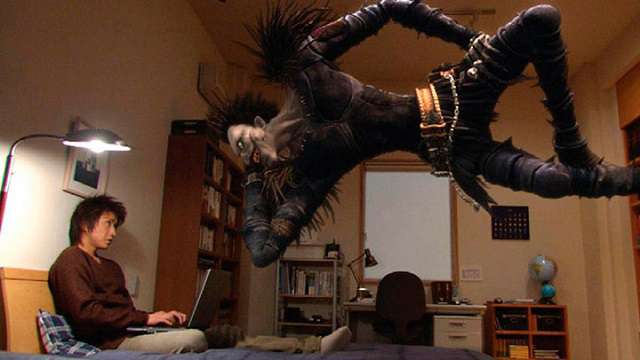
in Shusuke Kaneko’s Death Note (2006)
Death Note 1 & 2 (Shusuke Kaneko, 2006)
Based on a popular manga and anime series, Shusuke Kaneko’s two-part live action fantasy about a young man who’s given a notebook by a mischievous demon is an engaging fantasy which actually deals with an interesting theme. When Light Yagami (Tatsuya Fujiwara) writes a name in the book, that person dies, so he sets out to improve the world by eliminating bad people. A secret group of investigators are tasked with tracking down this global vigilante and his good intentions become more complicated as he has to use his power to protect himself against them. Dual-format edition from Funimation, with no extras.
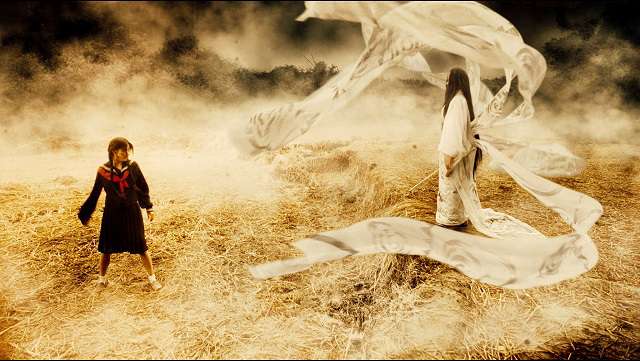
Blood: The Last Vampire (Chris Nahon, 2009)
French director Chris Nahon mixes martial arts with some western action slickness in this live action version of Hiroyuki Kitakubo’s 2000 anime short feature of the same name. Though it’s set around a U.S. Air Force base in Japan during the Vietnam war, it doesn’t make much of the time and setting, concentrating instead on the centuries-long conflict between human-vampire hybrid Saya (Ji-hyun Jun) and the powerful demon Onigen (Koyuki). Entertaining action-fantasy on Sony Blu-ray with a couple of behind-the-scenes featurettes.
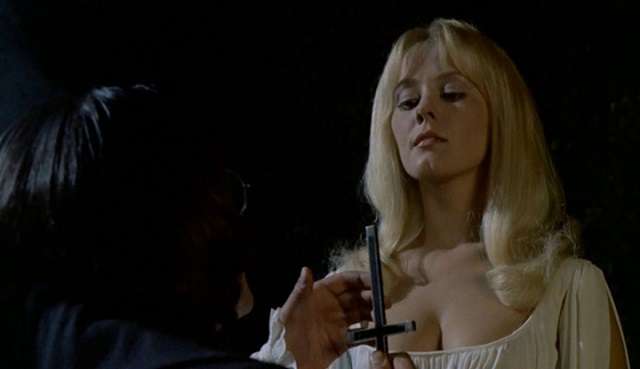
Lust for a Vampire (Jimmy Sangster, 1971)
The second, and least, of Hammer’s three Karnstein movies (very loosely based on Sheridan LeFanu’s Carmilla) just goes to show that Hammer’s key writer, Jimmy Sangster, was not much of a director. With lesbian vampires stalking an exclusive girls’ school, there’s no way this should be as dull as it is. Still, it looks good on Shout! Factory’s Blu-ray, mastered from a 4K scan, with two commentary tracks, an interview with actress Mel Churcher (who had a minor role), and an option to watch it in either of two different aspect ratios.
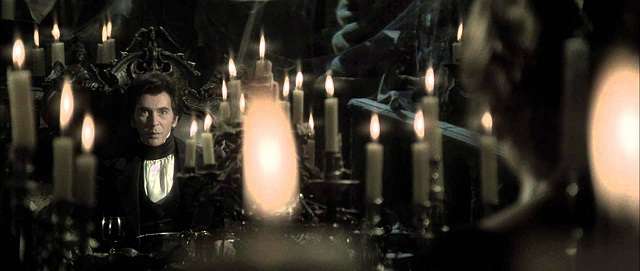
Dracula (John Badham, 1979)
I hadn’t seen John Badham’s Dracula (1979) in years, but watching it again on Universal’s 2014 Blu-ray, my memory was confirmed that it remains the best of the “tragically romantic vampire” movies. Frank Langella repeats his stage-hit interpretation of the Count, understandably brought to his doom by his desire for the very desirable Lucy (Kate Nelligan). Adapting the old Hamilton Deane/John L. Balderston stage version rather than going back to Bram Stoker’s novel, scriptwriter W.D. Richter juggles character relationships and adds one surprise twist involving Van Helsing which is sure to offend purists. Production design is lush and Gilbert Taylor’s cinematography rich and atmospheric. The disk includes a featurette and director commentary. (Yes, I now know Shout! Factory is bringing out a loaded special edition in a couple of weeks – which is no doubt why I recently found this copy at a bargain price. To double-dip or not, that is the question.)
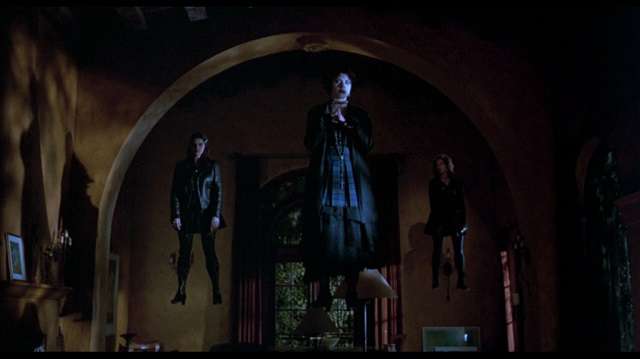
The Craft (Andrew Fleming, 1996)
It seems likely that Andrew Fleming’s 1996 tale of high school cliques and the supernatural was influenced by the original Buffy the Vampire Slayer feature (Fran Rubel Kuzui, 1992), and it’s a more successful movie, pointing the way to Joss Whedon’s even better television series which debuted in 1997. The dynamics of the teen coven, dominated by angry Goth Nancy (Fairuza Balk), who becomes increasingly unhinged when her power is threatened by new girl Sarah (Robin Tunney), are nicely drawn, giving the fantasy some genuine emotional grounding. Shout! Factory has issued a nice package with interviews, featurettes, deleted scenes and a commentary.
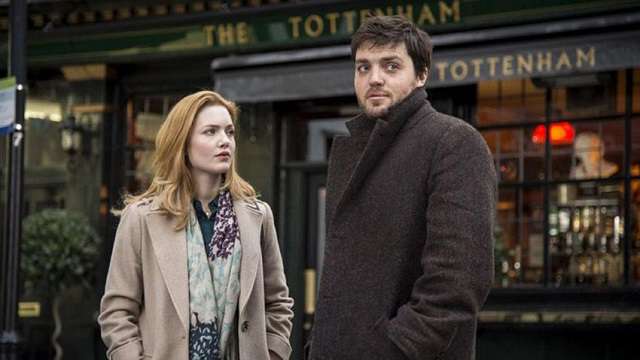
C.B. Strike (Various, 2017-18)
I’m not sure why J.K. Rowling, with her stature and commercial clout, would have sold the first three novels in her pseudonymous Cormoran Strike mystery series (writing as Robert Galbraith) to the BBC for what seems like a bit of a throwaway trilogy of highly condensed adaptations. But even though the narratives are seriously stripped down to squeeze the stories into three episodes for the first novel and two episodes each for the next two, production values are fairly good and they do capture some of the flavour of the books – which are more about the relationship between private eye Strike and his enthusiastic assistant Robin Ellacott, with the mysteries themselves merely the vehicle. Although Tom Burke and Holliday Grainger didn’t initially match my mental image of the pair, they do give engaging performances. The biggest benefit of the narrative compression is that there’s less time for Robin’s domestic troubles with irritating fiance Matthew (Kerr Logan). The series is fairly entertaining, but it would have made more sense to expand each book into a ten-part series of its own. Warners two-disk DVD set, with a brief featurette about each adaptation.
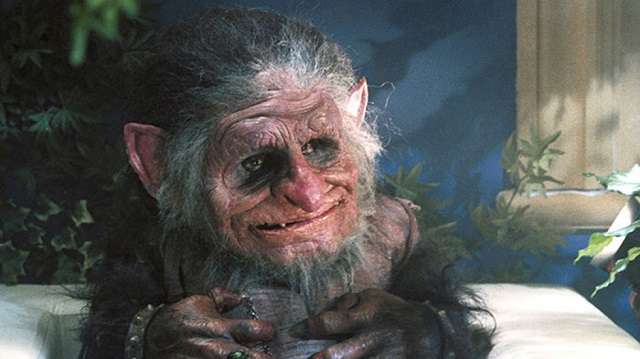
Troll 1 & 2/Best Worst Movie (John Carl Buechler/
Claudio Fragasso/Michael Paul Stephenson, 1986/1991/2009)
My only excuse for ordering this two-disk set is that I was baffled that it was being released by Eureka, home of the venerable Masters of Cinema series. After watching the set, I’m still no wiser – though they’ve done a terrific job. Troll (1986), the directorial debut of Empire Pictures resident effects specialist John Carl Buechler, is an oddity – it’s hard to gauge its tone or the intended audience; there’s strained comedy, elaborate creatures and an atmosphere which suggests a fairy tale rather than horror. It’s developed a bit of a cult over the years, probably because of its oddity. And it has absolutely nothing to do with Troll 2 – that title was slapped on Claudio Fragasso’s even odder movie in an attempt to cash in on the modest success of the Empire feature. The only possible similarity is the presence of small magical creatures. In the first film, actual trolls take over an apartment building, turning it into a kind of magical forest in which the residents are used to incubate more trolls. In the second movie, the small town of Nilbog (don’t read it backwards!) is populated by goblins who happen to be vegetarian. In order to maintain their food supply, they turn visitors into plants which eventually dissolve into a soupy mush ready for eating. This too has spawned a cult – in fact a bigger one, with people who all-out worship the movie for its unrestrained absurdity.
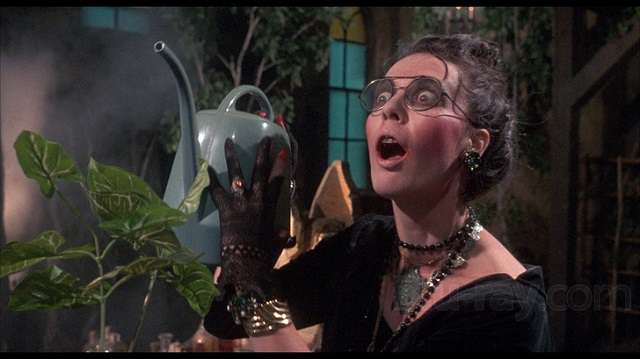
Years after production, child actor Michael Paul Stephenson, who played the son in Troll 2, all grown up, set out to discover just why people love the movie – and the resulting documentary, Best Worst Movie (2009), is surprisingly charming, funny and a little bit sad. For many involved, Troll 2 was their one brush with fame and it left strange marks on their lives. The doc’s main character is George Hardy, who after playing the father immersed himself in the life of a small town dentist. But perhaps most interesting is director Fragasso, whose work has often been hidden behind other directors’ credits (frequently Bruno Mattei). He’s interviewed in Italy, where he makes serious claims for Troll 2 having important themes, and seems genuinely hurt when he travels to the States for a festival and sees people laughing at his masterpiece. It’s not an uncommon thing for a filmmaker to see his or her work achieve success for the “wrong” reasons … and it’s particularly hard if they can’t shrug it off and just accept the audience’s judgment. Best Worst Movie turns out to be a really interesting exploration of the relationship between a creator’s intentions and an audience’s reception of the work … funny, sad and just a little painful.
Eureka’s set is stuffed with additional extras – a lengthy making-of for Troll, a commentary on Troll 2, more than an hour of additional material from the doc, plus fan comments and an audio-only discussion of screenwriting in relation to Troll 2. Perhaps the single oddest release I’ve acquired this year.

The Blood on Satan’s Claw (Piers Haggard, 1971)
Worlds away is Screenbound’s limited edition Blu-ray of Piers Haggard’s The Blood on Satan’s Claw (1971), one of several British movies of the period dealing with pagan religion and its violent clash with a repressive Christian establishment. Haggard’s film, however, differs from its two closest relatives – Michael Reeves’ Witchfinder General (1968) and Michael Armstrong’s Mark of the Devil (1970) – in that it sides against the pagans. (Robin Hardy’s The Wicker Man [1973] is a more complicated exploration of this central theme.) The Devil here is real and a malevolent threat which needs to be vanquished by the learned magistrate (Patrick Wymark), while in Reeves’ and Armstrong’s films “witches” are victims of psychologically twisted representatives of a society which is steeped in hypocrisy and perverted sexuality. This makes The Blood on Satan’s Claw relatively reactionary in the way that modern possession movies, starting with The Exorcist (1973), are reactionary – attributing rebellious behaviour, particularly unsanctioned sexual behaviour, to malevolent supernatural forces rather than natural urges. But given the premise of the Devil’s reality, Haggard’s film has a period authenticity even more convincing, perhaps, than Reeves’ and Armstrong’s equally fine work. In addition to the excellent image, the disk is stacked with interviews and featurettes, plus two commentary tracks.
*
Arrow Films had a month-long sale in October and, being a pushover, I ordered a bunch of stuff … some upgrades, some movies I’d previously seen but didn’t own, some new titles bought purely on spec. It’s a pretty mixed bag, to say the least…
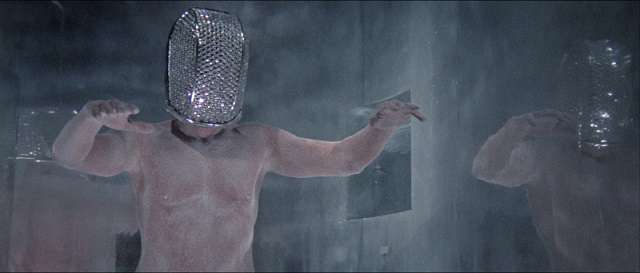
The Andromeda Strain (Robert Wise, 1971)
I actually already had Robert Wise’s The Andromeda Strain (1971) on Blu-ray, but Arrow’s disk is mastered from a new 4K restoration and has some new extras as well as the old ones from earlier editions. I have friends who find the film utterly boring, but I love it – what I call process stories fascinate me, stories about people carefully sifting evidence to find a solution to a problem. Character and dramatic conflicts are secondary to solving the puzzle, which is certainly true in the case of The Andromeda Strain – drama is taken care of by a careful casting of actors whose style and tone play well off one another. What matters is the step-by-step investigation of the crisis caused by a satellite bringing back an alien life form which is deadly to people and most animals on Earth. It’s a chilly film, with an uncluttered formal style which observes events with detachment no matter how intrinsically grim they might be. The image is spectacular, there’s a new commentary from critic Bryan Reesman, a chat from Kim Newman about the disease-disaster sub-genre, plus the two Laurent Bouzereau featurettes seen on previous editions. There’s also an annotated, illustrated copy of the shooting script, available as both an on-screen gallery and a PDF download.
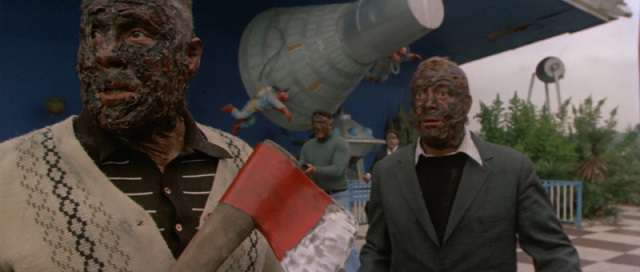
Nightmare City (Umberto Lenzi, 1980)
Nightmare City (1980) was the first Umberto Lenzi movie I ever saw (I have a European DVD from 1999) and I hated it. It seemed like the dullest, clumsiest zombie movie ever. Well, a lot of time has passed and I’ve seen a lot more movies by Lenzi since then, including his best work in the poliziotteschi and giallo genres. I confess I’ve avoided his cannibal movies, mostly because it’s a genre which doesn’t appeal to me beyond Ruggero Deodato’s grim masterpiece Cannibal Holocaust (1980). So my only excuse for ordering Arrow’s Nightmare City Blu-ray is that the movie figured quite largely in the extras on Grindhouse Releasing’s limited edition Blu-ray of Lenzi’s The Tough Ones and I got the urge to see it again … and why not a new Blu-ray rather than my scrappy twenty-year-old DVD? Maybe the two intervening decades of immersion in cinema trash has softened my brain, but I have to admit that I quite enjoyed it despite its clumsiness – horror really wasn’t Lenzi’s forte and all the mayhem is staged without finesse or any attempt to create suspense or tension. Lenzi’s lack of interest in zombies actually results in some interesting elements – a disease caused by radiation exposure drives its victims to eat flesh and more particularly drink blood, the plague producing super strength (and a completely random selection of make-up effects) and an undiminished ability to use weapons (knives, guns, clubs, axes), not to mention running at high speed. It’s like a movie by someone who heard about zombies third-hand, maybe at a loud party where he missed some of the details in the noise. The disk has two different transfers, both from compromised sources – the original negative which has extensive chemical damage, and an internegative with a very soft image. There are interviews with Lenzi, actor Maria Rosaria Omaggio and fan Eli Roth, plus a featurette on the issues with the source materials, and a commentary from Chris Alexander.
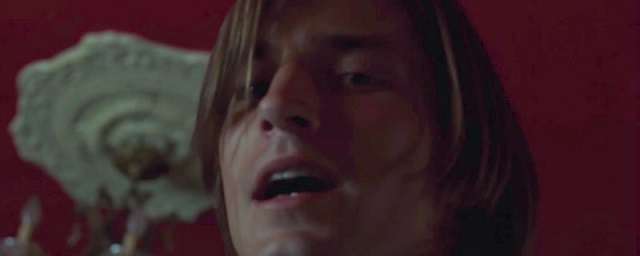
The Climber (Pasquale Squitieri, 1975)
I wasn’t familiar with the work of Pasquale Squitieri, but took a chance on The Climber (1975) because it’s a gangster movie from the mid-’70s heyday of the genre and it stars Joe Dallesandro, the former Warhol Factory star who had been in Paul Morrissey’s Flesh for Frankenstein (1973) and Blood for Dracula (1974), a pair of long-time favourites (and where the heck are restored Blu-ray editions of those? My Criterion DVDs from 1998, though prized, are both non-anamorphic, letterboxed transfers which look sadly inadequate today). A good-looking but usually not very expressive actor, Dallesandro is excellent here as a small-time hood in Naples, involved in a smuggling operation for the local mob. Ambitious but not terribly smart, he’s skimming off the top and gets caught. The boss orders him beaten and kicked out of Naples. He heads to Rome and begins building his own gang of thugs, eventually moving back to Naples to take on his old boss. As he gains power, it becomes less interesting to him. He becomes conspicuously wealthy, gets deeper into drugs, abuses his loyal girlfriend, and eventually pushes the mob too hard and reaps the consequences. Kind of a mini-Scarface, he repeatedly makes decisions which lead him in the wrong direction. But Dallesandro remains an appealing figure, partly because the dubbing makes him sound a lot like Clint Eastwood at his most relaxed. The image is from a 4K restoration from the original negative so it looks very good. The only extra is a lengthy interview with Dallesandro about his Italian career.
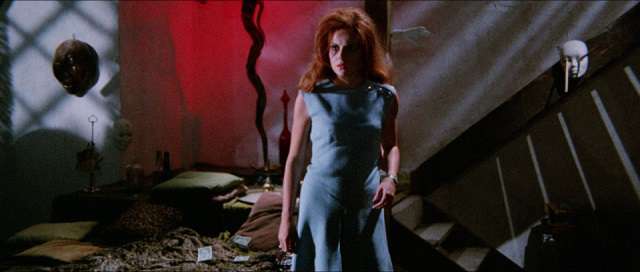
The Forbidden Photos of a Lady Above Suspicion (Luciano Ercoli, 1970)
Producer Luciano Ercoli turned to directing with this giallo, which hearkens back to the women-in-peril thrillers of the ’60s. The neurotic wife of a businessman with financial troubles is attacked one night by a knife-wielding biker who makes vague threats involving her husband. The man insinuates himself into her life, pushing her into a sexual relationship by threatening to expose her husband for the murder of one of his creditors. As it all gets more complicated, her grip on reality becomes more tenuous … until a big final twist saves her. Ercoli’s reasonably stylish technique is already on display (further developed in his follow-up movies Death Walks on High Heels [1971] and Death Walks at Midnight [1972]), but he doesn’t have complete control of the narrative shifts and Dagmar Lassander’s neurotic heroine gets increasingly irritating the more overwhelmed she is. The image is fine, and there are several featurettes and a Kat Ellinger commentary.
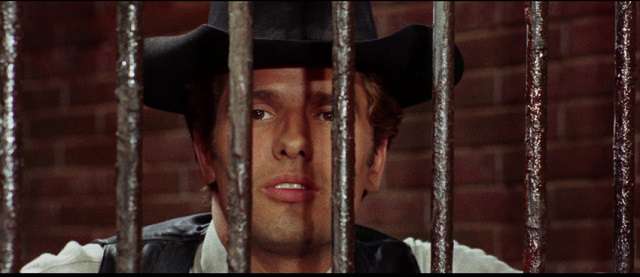
A Pistol for Ringo/The Return of Ringo (Duccio Tessari, 1965)
Before directing, Ercoli produced some notable movies, including Andre Hunebelle’s 1964 Fantomas and these two spaghetti westerns starring Giuliano Gemma. Despite the titles, and being shot back-to-back in Spain with the same cast and crew, A Pistol for Ringo and The Return of Ringo (both 1965) are narratively unrelated. In the first, set in 1898, Ringo (Gemma) is a gunman who keeps getting off on pleas of self-defence. When a gang of Mexican bandits cross the border and hit the local bank, taking refuge at a nearby ranch where they threaten to kill everyone unless they get free passage back across the border, Ringo makes a deal with the sheriff to infiltrate the gang and save the hostages – for a cut of the recovered loot. Unarmed, Ringo has to outwit the gang, though he seems willing to help them against the sheriff for a bigger cut. It’s never really in doubt that, despite being an opportunist, he’ll do the right thing.
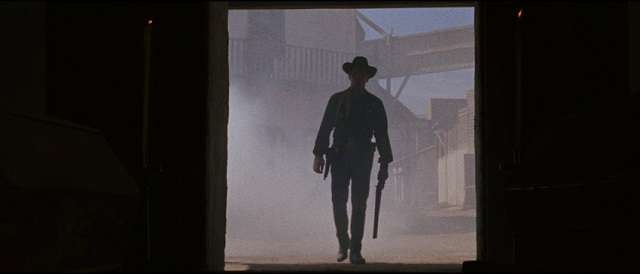
In the second film, “Ringo” is actually Captain Montgomery Brown (Gemma again), returning home from the Civil War in 1865, only to find the town controlled by a Mexican gang who are headquartered at his own estate, where the gang leader has also taken possession of Brown’s wife. Out of uniform and passing as a peasant, Brown sets out to destroy the gang, rescue his wife and the daughter he’s never met, and free the town. Both movies require the hero to conceal his identity and skills as he outwits forces physically more powerful than himself. There are touches of humour, but also melancholy. Again, image on the double-feature disk is excellent, and there are two commentaries, several featurettes and an appreciation of the films from critic Tony Rayns.
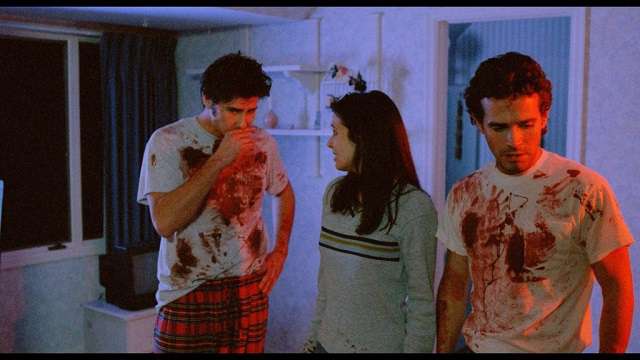
in Daniel Liatowitsch & David Todd Ocvirk’s Kolobos (1999)
Kolobos (Daniel Liatowitsch & David Todd Ocvirk, 1999)
I’d never heard of this one until Arrow released it on disk. Not sure if it was the first movie to combine the Big Brother type of reality show with horror, but it established the pattern of a group of strangers trapped somewhere under surveillance by forces unknown, picked off one by one by an unseen killer and some handy booby traps. Vincenzo Natali’s Cube (1997) came a couple of years earlier, but that was sci-fi, while Kolobos (1999) is set in the “real” world, like Marc Evans’ My Little Eye (2002) or James Wan’s Saw (2004). A handful of people are offered a chance at media stardom by living together in a house under constant surveillance, but once they’re inside, they start to die gruesome deaths. They’re the usual collection of irritating, bickering nonentities, with one obviously psychologically troubled woman whom the others come to distrust. She keeps seeing a faceless apparition which may just be a figment of her imagination, a projection through which she does horrific things, or … who knows what? It has some effective moments, but ends up feeling aimless. The image is good, there’s a directors’ commentary and several featurettes. The most interesting thing on the disk, though, is an amateurish short film made by Liatowitsch when he was twelve, for which he provides a commentary which is surprisingly personal and finally very moving.
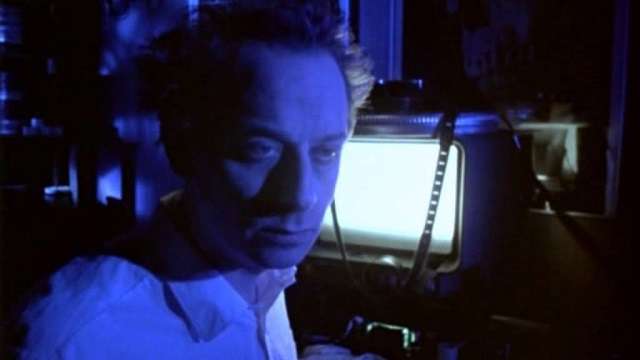
Evil Ed (Anders Jacobsson, 1995)
Like Eureka’s Troll set, Arrow’s three-disk Blu-ray edition of this low-budget Swedish horror-comedy represents the kind of excess that I relish. There are Blu-ray and DVD copies of director Anders Jacobsson’s reworked 2017 version of the movie with a bunch of featurettes; and then there’s another Blu-ray containing the original 1995 version plus a three-hour(!) making-of documentary. So far I’ve watched the newer version and some of the extras and have to say that I wish the movie was better than it is to justify all this care and attention. Not that it isn’t entertaining… A nerdy film editor is assigned by his obnoxious boss to spend his time cutting gory scenes out of horror movie prints destined for repressive European markets. (Jacobsson made the movie to provoke restrictive Swedish censors.) After endless hours of watching mutilations and graphic murders, the editor loses all sense of reality and starts killing people himself. The comic tone takes the edge off the gore and the pace is rather slack, but as an editor myself, I can appreciate the mental strain of watching the same stuff over and over again with a deadline hanging over you. Johan Rudebeck hams up a storm as Eddie the editor, making the movie a little reminiscent of early Peter Jackson, particularly Bad Taste (1987).
Comments